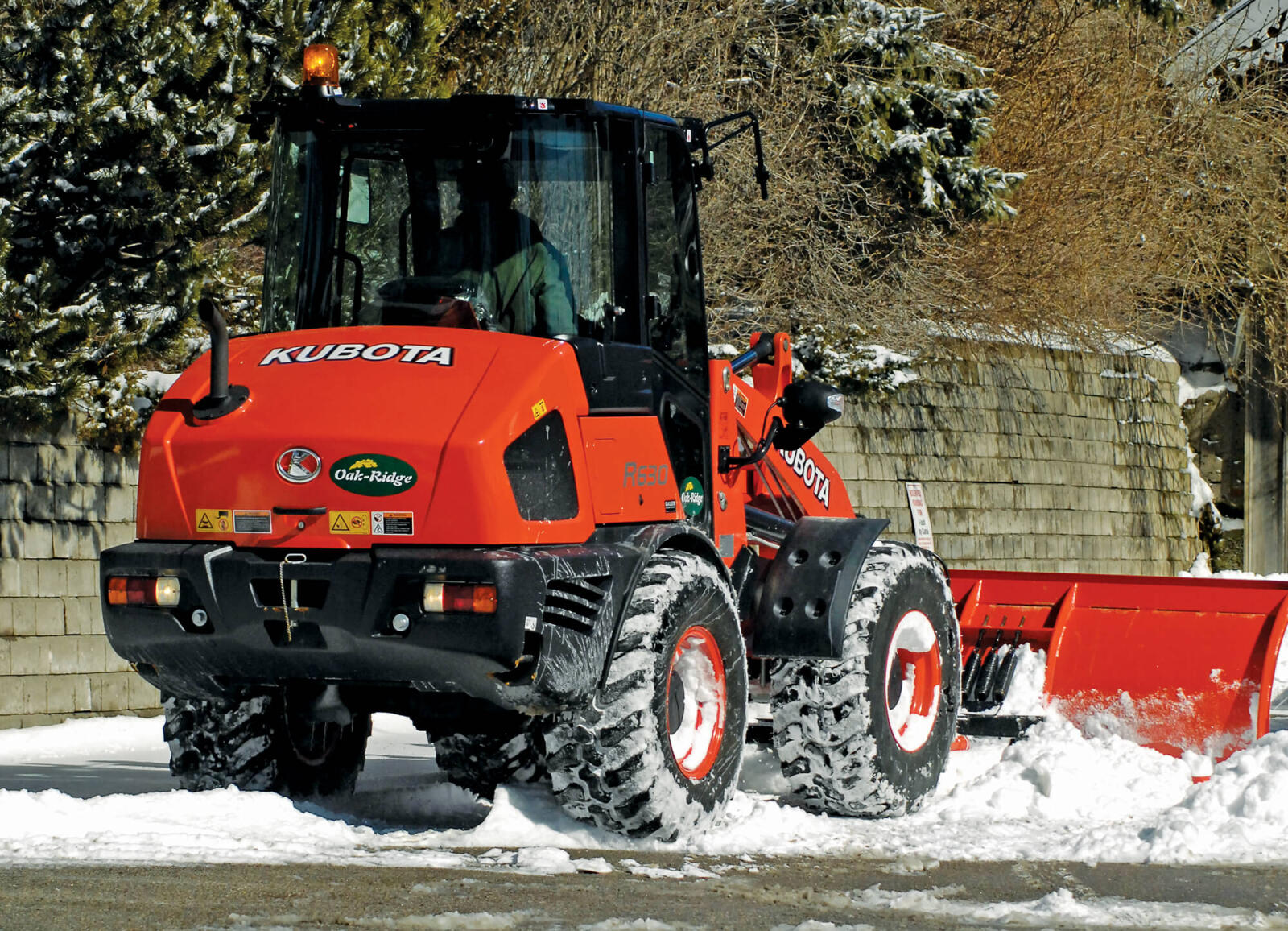September 28, 2017

With more competition in the snow and ice industry, companies look for new ways to reduce labour and increase profit margins.
Profit strategies for snow
BY MARK BRADLEY
 Competition is ramping up in the snow industry. The number of contractors getting into snow and ice is growing, and yet the number of events — and their severity — seem to be declining. With supply up and demand down, your company is going to have to up its game to win in the snow industry.
Competition is ramping up in the snow industry. The number of contractors getting into snow and ice is growing, and yet the number of events — and their severity — seem to be declining. With supply up and demand down, your company is going to have to up its game to win in the snow industry.In our travels across North America teaching snow and ice business workshops, we’ve met thousands of snow contractors and thought we might share some of the trends and business practices emerging among industry leaders.
Sell the right jobs
Net and gross profit are tempting numbers to zone-in on, but they don’t tell the whole story. You can make good gross and net profits on labour rates in snow. Your true cost of labour is roughly half the billing rate — so the margins look great. But don’t forget that labour is the single hardest factor to manage in snow. Turnover is high, availability is spotty and the work is challenging.SOLUTION: Successful companies are targeting jobs that use less labour, more equipment, and more salt. Your margins may not look as strong, but any time you can increase job revenues with fewer people, you are headed in the right direction.
Estimate and sell route density
The more unbillable time you have, the smaller your margins. Even if you priced all your work for profit, if you have too much prep and drive time, you will have little left over at the end of the year. And for plow trucks and on-road equipment, you can’t underestimate the cost of this unbillable time. It includes:
- Inspecting and prepping equipment at the yard.
- Loading with salt.
- Driving to first site.
- Driving between all subsequent sites.
- Refilling with salt (if necessary).
- Driving back to the shop.
- Salt unload, cleanup, parking, paperwork.
SOLUTION: Estimate and sell for route density. Give your estimators and sales staff a means of estimating ‘on the road.’ Drive to areas with current sites, and bang out estimates for neighbouring, non-client sites. Reach out and ask if it’s okay to drop off a proposal. By selling work close to existing work, you will reduce your unbillable time and drive more profits with fewer man hours.
Recover equipment costs
All too many contractors try to keep staff ‘busy’ during the winter, and apply the same logic to their equipment. However, staff get paid with a regular payroll cycle — you don’t forget those costs — but it’s easy to forget, or ignore, the costs of trucks and equipment when estimating. The irony is, snow and ice is hard on equipment, causing more wear and many more repairs compared with summer work. You simply cannot afford to give your equipment away when bidding snow work.SOLUTION: Learn the cost of your equipment and estimate for it. Even equipment you own still has a cost — you’ve made all the payments! Snow is going to beat your equipment up, and like it or not, a day will come where it needs to be replaced. And don’t forget the cost of fuel, repairs, maintenance and insurance. Your current bids must cover those basic costs, and ensure you are saving for your next, replacement piece.
Train and enforce best practices
My own analysis shows that good, experienced snow operators clear lots up to 30 per cent faster than new or inexperienced operators. Why? They have a better “plan of attack” for the site. They start in the right place, proceed through the site in a logical order, minimize reversing and avoid going over the same areas twice. Imagine if your entire operation could execute like your best operator…
SOLUTION: Start with site maps. Make sure every site has a clear site map that shows operators areas they should plow, and where they can pile. Add basic notes, tips or warnings to these maps. Then take your maps one step further. Sit and review the site maps with your best operators before the snow falls. Identify the right plan of attack for each site and draw it on the map. Simple numbers showing order of operations, and arrows showing direction of pushes, are enough to improve productivity for even the newest of operators.
Savvy contractors are taking mapping to the next level and going mobile/electronic. Why print, hand out and maintain 15 maps, when you can put one site map online for everyone to share? No more lost maps, no more getting everyone the latest version, and no more spending days or weeks printing and assembling maps into binders.
Calibrate and manage salt use
Over-salting is far more common than most of us want to admit. Over-salting happens, and it happens often. Crews want to do a good job. They don’t want to get called back, and they don’t have any real method of measuring salt, unless your trucks are equipped with scales.SOLUTION: Calibrate your salters and give crews salting targets in time (minutes) instead of pounds or tons. Simply weigh how much salt comes off your truck’s salters in 15 seconds and multiply that by four to get pounds per minute. Once you have that number, simply divide the number of pounds you estimate for your sites by your salt application rate (lbs./min.) to get how long you should be salting the lot, in minutes. Times do not have to be accurate to the second, and events are different based on temperature and type of snow or ice. Giving your crews salt-time guidelines can knock 10 to 20 per cent off your salt use, which is money in the bank.
Boost transparency and accountability
Clients are tired of guessing who is going to do the best job, for the best price. Since we all ‘say’ we do the best work, clients simply go for price and hope for the best.SOLUTION: Increase communication with your clients during events, and sell this communication when you sell your bids. Maybe you use e-blasts — or even something like Twitter — to reach clients to let them know of a coming weather system. Then connect again to update them on your response plan. Perhaps you email reports after every event, or even better, give clients live access to a site or app where they can check on the status of their own sites! The technology and systems are out there, and if you want to get paid like a professional contractor, you are going to need tools that show clients you do what you say you’re going to do. For most clients, it’s really that simple. If you charge a fair price, and live up to your commitments, you earn clients for life.
Mark Bradley is CEO of TBG Landscape and LMN, based in Ontario.